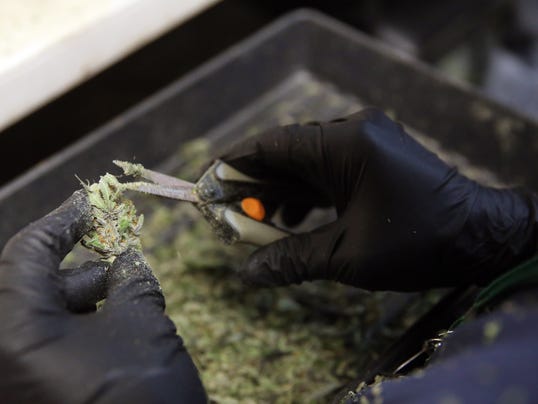Wednesday, Apr 30, 2014
North Park shooting compels us to renew our call for decriminalization

- Photo by David Rolland
A little after noon last Friday, two men—at least one of them armed—entered a building on Ray Street in North Park, where a medicinal-marijuana dispensary had, just a few days earlier, begun operating in violation of city law. Moments later, one of them, an 18-year-old, was dead, and a dispensary employee lay wounded, a bullet lodged in his gut (he’ll be OK). The second suspect got away with a bag full of weed, police say, likely fleeing on wheels through an alley between Ray and Grim streets. Folks who work on Ray, a thriving visual-arts district located one block from CityBeat’s office, were rattled as police taped off the area to investigate.
The incident occurred the day after people lined up at City Hall in hopes of eventually opening legal medicinal-marijuana dispensaries under San Diego’s recently adopted ordinance, which allows for a ceiling of 36 dispensaries citywide, or as many as four per City Council district.
In other words, the incident occurred while San Diego is still in limbo regarding legal distribution of marijuana for medicinal purposes and while most of the country is still in a prohibition era that, much like when alcohol was prohibited nearly a century ago, has been plagued by violence. An obvious difference is that much of the violence surrounding marijuana prohibition has occurred in Mexico.
Whether the shootout in North Park is a one-time, isolated occurrence or a sign of things to come is an open question, but it certainly doesn’t do much to allay the concerns of people who are worried that medicinal-marijuana dispensaries will be targets for criminals. Advocates for safe access to medicinal marijuana are able to point to studies that show there’s no evidence that dispensaries have increased the frequency of crime, but we don’t know what will happen in the future.
In any case, the incident compels us to repeat our call for the blanket legalization of marijuana. Since the suspect who fled did so with marijuana in hand, police believe the target was product, not cash. Were marijuana legal and easily accessible, no one would commit armed robbery to steal it. This is why we don’t see young men holding up liquor stores for alcohol or convenience stores for cigarettes. They do hold up stores to get cash, however, and because banks are leery of doing business with marijuana dispensaries—thanks to their ambiguous legal nature— dispensaries are liable to have a lot of cash on the premises, potentially making them a target.
Look, we’re not trying to be alarmist; we don’t believe three-dozen marijuana dispensaries are going to turn San Diego into the Wild West. We’re simply adding the implications of Friday’s event to a long list of reasons why we think California should follow Colorado and Washington’s lead.
The negative impacts of the war on marijuana have been well-documented—mass and racially unequal incarceration, billions upon billions in costs to taxpayers—and the government has nothing to show for it: Demand is sky-high, and supply is plentiful.
Legalization would cut violent Mexican cartels out of the American market and allow the police to devote more energy to more important matters. The money saved by not arresting, prosecuting and locking up offenders of marijuana laws—in addition to the trainloads of money that would be made by taxing a regulated marijuana trade—could be spent on education, social services and infrastructure. Meanwhile, the hemp industry could potentially boom.
Marijuana may come with some health risks, but the unhealthful downsides to alcohol, cigarettes and high-fructose corn syrup are many and welldocumented, but those drugs (yes, we just classified high-fructose corn syrup as a drug) are legal. The situation is loaded with hypocrisy.
Do we think the country would be better off if everyone was high half the time? No. But we don’t believe that would be the result. Anyone who wants it now can get it. According to a 2013 Pew Research Center study, 48 percent of Americans had tried marijuana, but only 12 percent of those people say they’d used it within the previous year. While that number strikes us as low, it tells us that, by and large, if Americans don’t think it’s good for them to do frequently, they won’t.
That same study revealed, for the first time ever, that a majority of Americans think marijuana should be legal.











